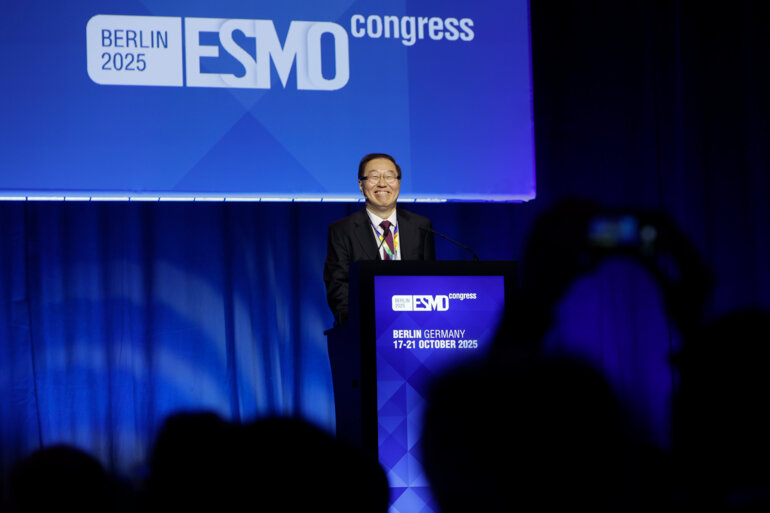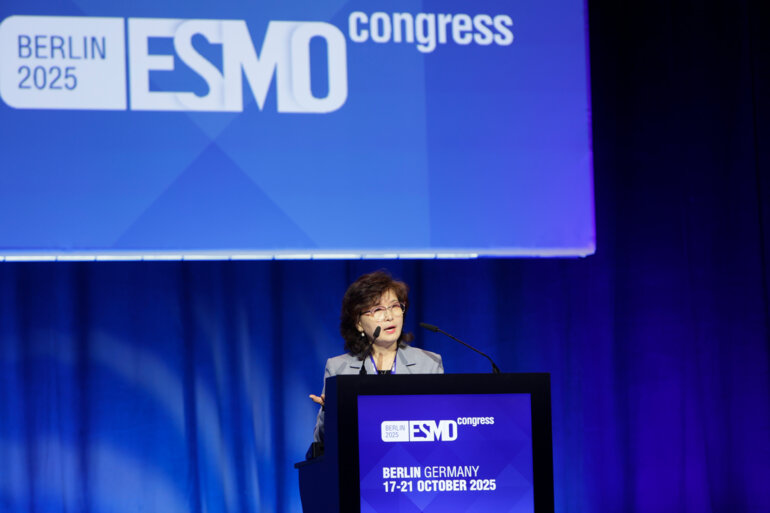Personalised proteogenomics has the power to transform the identification, staging and management of NSCLC in never smokers
Lung cancer in never smokers is a growing problem. Proteomics provides insights into the molecular signature and pathogenesis of early-stage non-smoking non-small cell lung cancer (NSCLC) and can help to provide patients with better treatment options. Investigations in a prospective cohort of treatment-naïve patients from Taiwan uncovered a complex aetiology, with endogenous (APOBEC) and environmental carcinogen (polycyclic aromatic hydrocarbons [PAHs], nitrosamine) signatures as well as the proteogenomic hallmarks of tumour progression in early-stage NSCLC (Cell. 2020;182:226–244.e17). Proteomics-informed classification beyond clinical staging demonstrated diverse trajectories of patients within the early stages of disease and led to a refined classification of stage I patients, comprising stage IA ‘‘late-like’’ and stage IB ‘‘late-like’’ signatures that were enriched with aggressive features, such as visceral pleural invasion, TP53 and EGFR L858R mutations, and that had similar profiles to stage II–IV disease. An ongoing collaborative study with the Clinical Proteomic Tumor Analysis Consortium (CPTAC) under the International Cancer Proteogenome Consortium (ICPC) revealed that such environmental carcinogen signatures extend to never smokers from the USA, Europe and other parts of Asia (Cell. 2020;182:200–225.e35).
The practical clinical use of proteomics-based subtyping was subsequently demonstrated by our unpublished findings showing that not only did patients with stage IB “late-like” disease have a recurrence rate close to that of late-stage disease, but they also showed earlier disease recurrence, probably because, unlike patients with later stage disease, they were not receiving treatment. Additionally, recurrence rates for stage IA “late-like” disease were substantially higher than those in patients with other stage IA disease. An ongoing joint initiative, representing the most extensive cross-population of Western and Asian patients to date, with diverse demographics and key mutations, is expected to provide further insight into subtype classification.
The findings from these studies inspired the search for protein biomarkers to identify the subgroups of patients with stage I disease who are at a high risk of early recurrence and who would benefit from a more aggressive therapeutic approach or more intensive follow-up. Due to the inherent technical demands of protein assays – including sensitivity, robustness and operative issues – gene mutation testing remains the standard approach and there is a need to educate the oncology community and regulatory authorities about the benefits of protein-based companion biomarkers. While studies on the staging utility of “late-like” proteins were based on tissue analyses, non-invasive serum assays offer a more practical application in the clinical setting. The Taiwanese Cancer Moonshot Team has investigated the diagnostic value of a number of plasma proteins identified by big-data analysis. Early indications from independent cohorts are that a four-protein serum assay has very promising sensitivity to predict early recurrence in patients with stage I lung cancer undergoing surgery. Patients assessed as low risk did not have cancer recurrence within 5 years. Proteomics profiles can also be used to help understand the mechanism of action involved in the inevitable development of resistance to treatment with tyrosine kinase inhibitors and to identify the next appropriate type of therapy for these patients. In comparison to ELISA testing, mass spectrometry-based devices that measure protein biomarkers are underutilised in clinical practice, yet they provide a robust, user-friendly assay that could facilitate the optimisation of patient care (Clin Proteomics. 2024;21:12).
Finally, serum-based protein biomarkers may also help in the detection of non-smoking NSCLC. The increase in lung adenocarcinoma rates in Taiwan is continuing despite a successful campaign to reduce smoking and, for the first time, the number of women affected outweighs the number of men. Low-dose computed tomography (CT) is an accepted screening method but may be limited by high false-positive rates. These could be mitigated by the use of complementary serum-based protein biomarkers, and this is currently being investigated using data from Taiwan’s national low-dose CT-mediated screening programme, involving over 12,000 never smokers (Lancet Respir Med. 2024;12:141–152).







